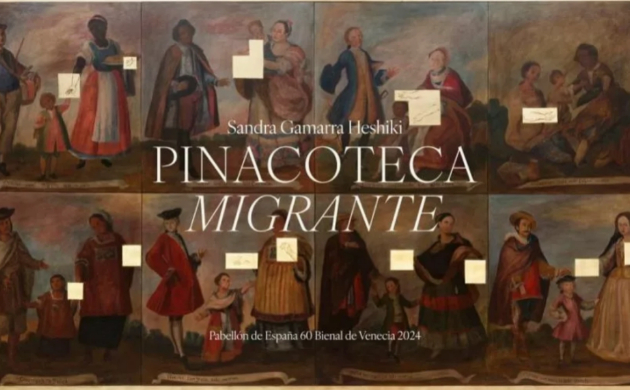The Peruvian artist Sandra Gamarra, represents Spain at the Venice Biennale. It is the first time in 60 editions that an artist not born in Spain has done so. Her project, 'Pinacoteca migrante', questions colonial narratives and historical modes of representation. The project is curated by Agustín Pérez Rubio, with a long career in Latin American art as artistic director of the Museum of Latin American Art of Buenos Aires (Malba) or as curator of the Chile pavilion at the 2018 Biennial.
The Spanish pavilion at the 60th Venice Biennale - which is celebrated from April 20 to November 24 - thus becomes a space to reread the Spanish pictorial heritage (Murillo, Zurbarán or even Velázquez) and make silenced cultures visible. Gamarra, who was already at the 2009 Venice Biennale in the pavilion of the Italian-Latin American Institute, takes as a starting point paintings, from the time of the Empire to the Enlightenment, in which reference is made to the territories that were part of Spain, but they carry with them a “monolithic notion that was based on the destruction of other forms of social organization.” Through six rooms or sections she will explore the classic genres of the arts: engraving, portrait, landscape... with interventions and reinterpretations that will analyze the biased representations between colonizers and colonized, in addition to offering a historical context that is linked to the present. .
The rooms that make up Pinacoteca migrante are titled: Tierra Virgen, about paintings of Spanish landscapes, but also from Latin America, the Philippines and North Africa; Cabinet of Extinction, which links colonialism with extractivism; Cabinet of Illustrated Racism, a story about how anthropology and science were used as a tool of racial discrimination; Mestizo masks, on the portrait of settlers; Altarpiece of Dying Nature, which will relate the still life to the construction of opulence and treasures; and Migrant Garden, which will recreate monuments about the conquest that are located in the former colonies. In all of them he will combine the plastic arts with quotes from ecofeminist writers or thinkers; modifications of facsimiles of illustrations from real archives or representations of alien or invasive plants, alluding to migration.



